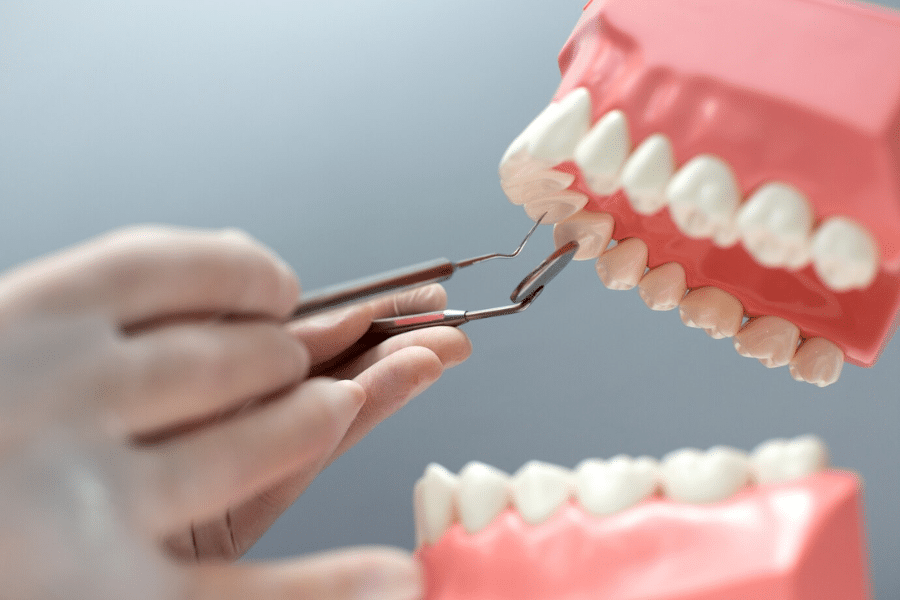When faced with the prospect of a root canal, many patients feel a sense of apprehension. Root canals have long been the standard treatment for saving severely damaged or infected teeth, but they come with their own set of drawbacks. Some of it includes discomfort and the potential for future complications. However, advancements in dental technology have paved the way for alternative treatments that offer patients a way to save their teeth without the need for traditional root canal therapy. In this comprehensive guide, we will explore some of these innovative alternatives and understand their importance.
Root Canal Treatment is Not Always the Solution.
Tooth extractions can lead to issues down the road when the socket fails to heal properly. Cavitations, or areas of dead bone tissue, sometimes form in the jaw where a tooth is removed. Standard extraction protocol calls for dentists to take out the tooth while leaving behind the periodontal ligament within the socket. However, this leftover tissue hampers the healing process. Typically, just a thin layer of bone grows over the hole left behind from the root, creating a void underneath. Over time, this cavity in the jaw bone can lead to ongoing inflammation and complications. Proper healing requires thoroughly cleaning out the socket during extraction to stimulate the regeneration of healthy bone. By revising conventional practice, dentists can prevent the development of cavitations that may cause problems for patients later on (Huggins, 2020).
Root Canal Alternatives You Should Know
Metal-Free Partials: A Modern Solution for Missing Teeth
Traditional partial dentures often include metal clasps for stability, but many patients prefer metal-free options for aesthetic reasons or due to metal allergies. Metal-free partials, also known as acrylic partial dentures, are made from a lightweight, biocompatible material that blends seamlessly with your natural teeth.
Metal-free partials are designed to match the color and appearance of your natural teeth, creating a seamless smile. The lightweight material and absence of metal clasps make metal-free partials more comfortable to wear. Also, the material used in metal-free partials is safe for patients with metal allergies or sensitivities. While not as strong as metal-based partials, metal-free partials are durable and can last for several years with proper care (Zarone et al., 2011).
Ceramic Crowns: Restoring Teeth Naturally
Ceramic crowns, also known as porcelain crowns, offer a natural-looking solution for teeth that are severely decayed, damaged, or discolored. These crowns are custom-made to match the shape, size, and color of your existing teeth, providing a seamless restoration.
Ceramic crowns mimic the translucency and color variations of natural teeth, ensuring a seamless blend with your smile. They are strong and durable, able to withstand the forces of biting and chewing. Ceramic is a biocompatible material, making it safe for patients with metal allergies. These crowns are highly resistant to stains, helping to maintain a bright, white smile (Donovan & Cho, 2003).
Zirconia Implants: A Strong and Biocompatible Option
Zirconia implants are a popular alternative to traditional titanium implants due to their strength, biocompatibility, and aesthetic appeal. These implants are made from zirconium oxide, a durable and biocompatible material that integrates well with the jawbone. Zirconia is a biocompatible material, meaning it is well-tolerated by the body and unlikely to cause allergic reactions. These implants closely resemble natural teeth, making them an excellent choice for front teeth or visible areas of the mouth. With proper care, zirconia implants can last a lifetime, making them a cost-effective solution in the long run (Özkurt & Kazazoğlu, 2011).

Biomimetic Fillings: Preserving
Biomimetic fillings, also known as tooth-colored fillings or composite resin fillings, are a conservative alternative to traditional amalgam fillings. These fillings are made from a tooth-colored composite resin that bonds directly to the tooth, preserving more of the natural tooth structure. The tooth-colored material blends seamlessly with your natural teeth, providing a more natural-looking restoration. Composite resin is a biocompatible material, making it safe for patients with metal allergies or sensitivities.
While root canals have long been considered the standard treatment for saving damaged or infected teeth, they are not the only option available to patients. From metal-free partials to biomimetic fillings, modern dentistry offers a variety of alternatives that prioritize both the health and aesthetics of your smile. By working closely with your dentist to explore these options, you can find a treatment plan that meets your needs and preserves your natural teeth for years to come. Say goodbye to root canals and hello to a healthier, happier smile!
References
Huggins, H. (2010). Root Canal Dangers. DNA.
Lin, L. M., Rosenberg, P. A., & Lin, J. (2005). Do procedural errors cause endodontic treatment failure? The Journal of the American Dental Association, 136(2), 187-193.
Zarone, F., Russo, S., & Sorrentino, R. (2011). From porcelain-fused-to-metal to zirconia: clinical and experimental considerations. Dental Materials, 27(1), 83-96.
Donovan, T. E., & Cho, G. C. (2003). The role of all-ceramic crowns in contemporary restorative dentistry. Journal of the California Dental Association, 31(7), 565-569.
Özkurt, Z., & Kazazoğlu, E. (2011). Zirconia dental implants: a literature review. Journal of Oral Implantology, 37(3), 367-376.



